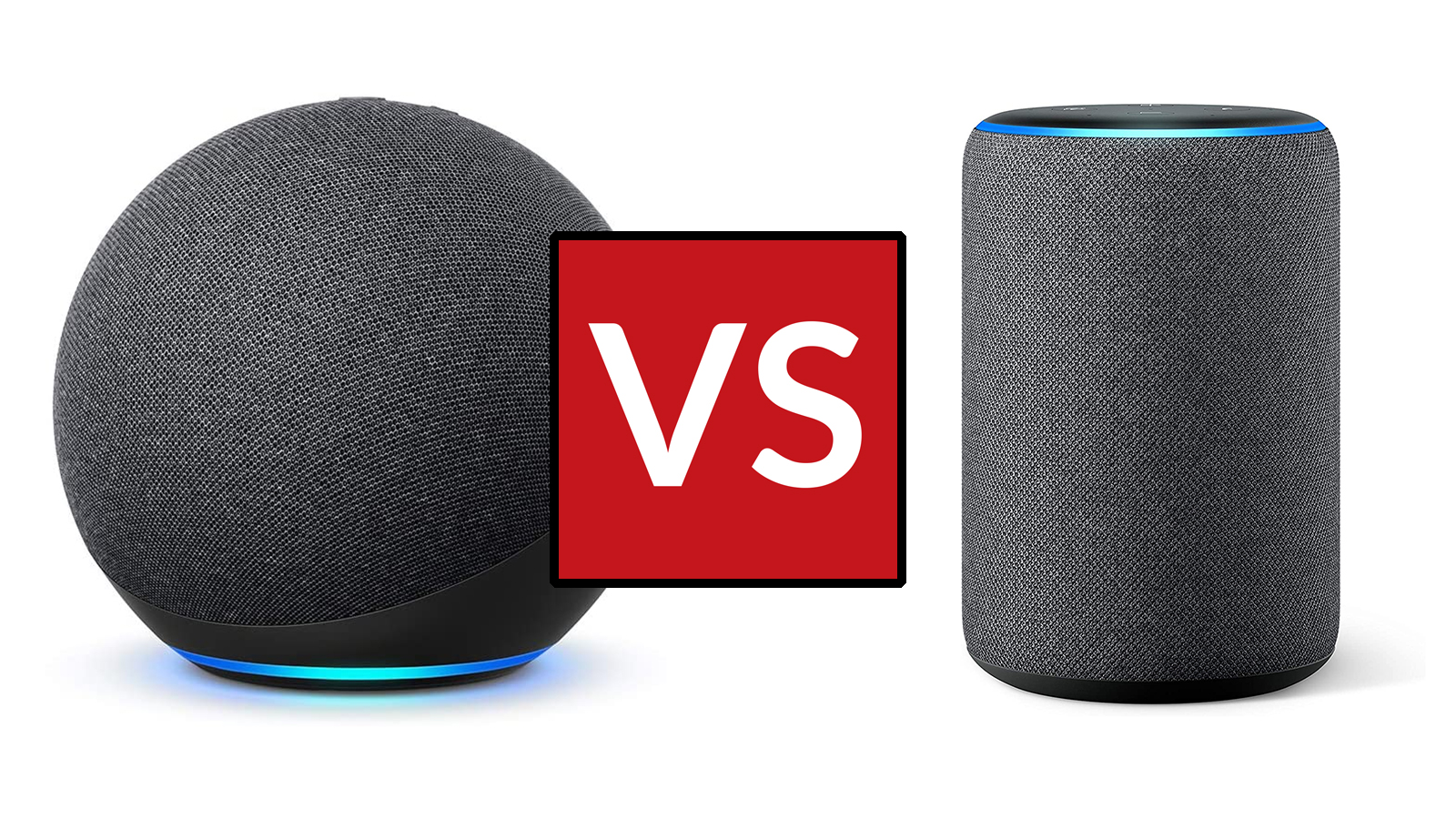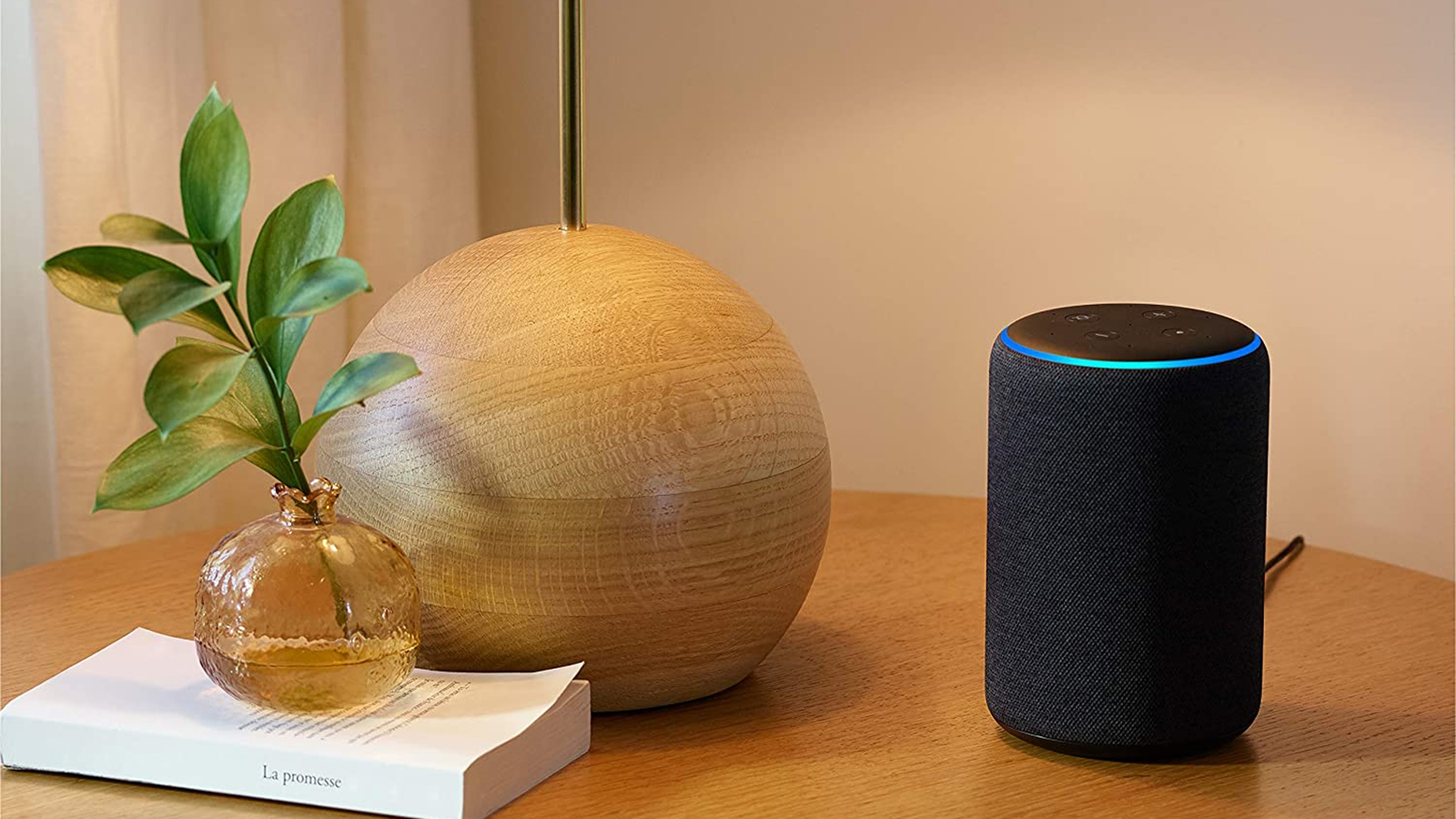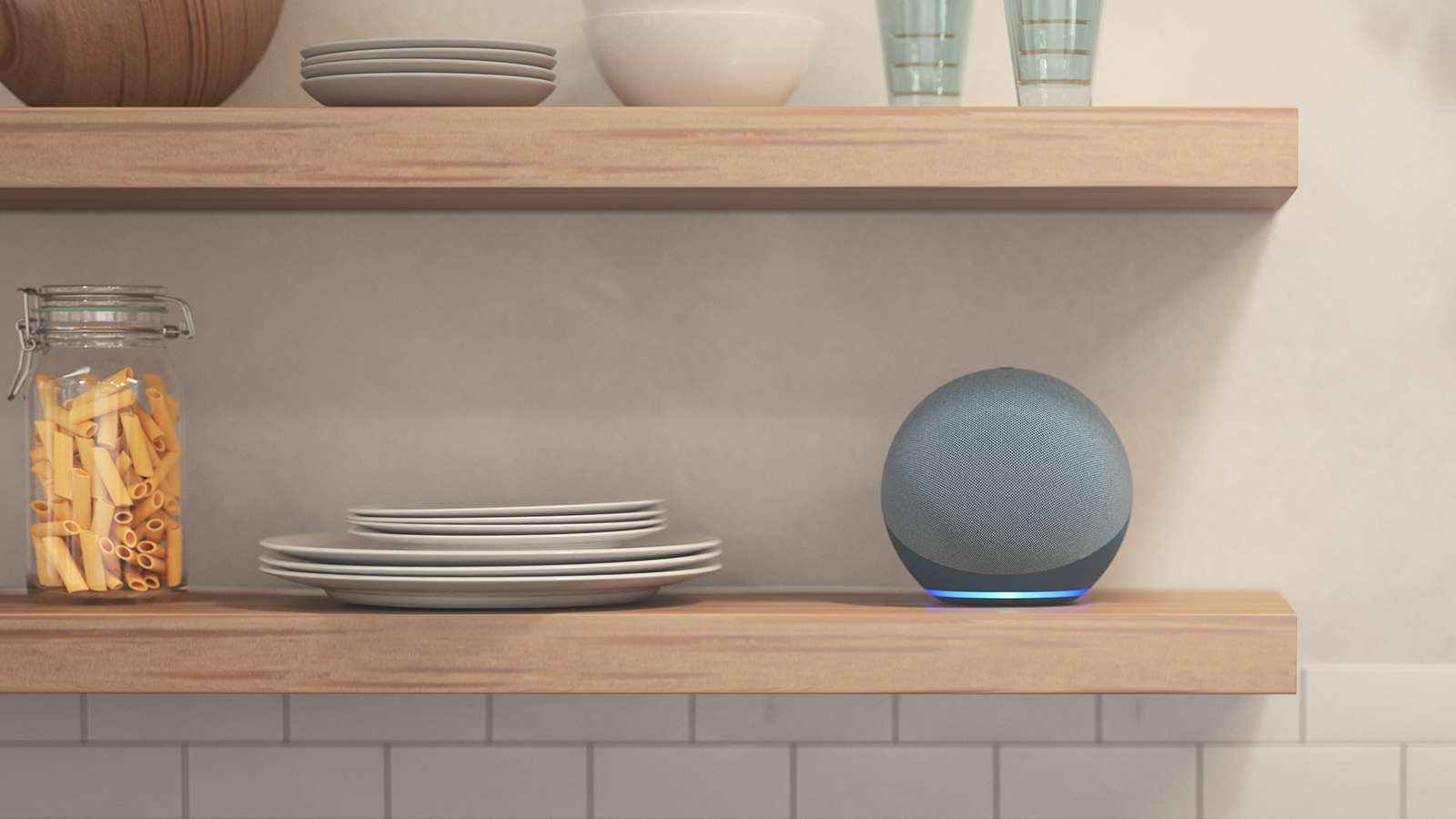Amazon Echo (4th gen) vs Amazon Echo (3rd gen): Everything that's new in the latest Echo
Do you stick or twist when it comes to the Echo speakers?


Many people will be keen to know how the Amazon Echo (4th gen) stacks up against the Amazon Echo (3rd gen) now that the former has replaced the latter on the Amazon website – should you be thinking about an upgrade if you already have an Echo set up at home?
With 2021's Black Friday deals here and both the 3rd and 4th generation Echoes being discounted by lots of retailers including Amazon itself, lots of people will be looking at grabbing a new Amazon Echo, but if you already own a 3rd gen (or even a 1st gen or 2nd gen) device then it might not be worth your while to upgrade to a 4th gen model.
We're here to help ease your confusion and bring some clarity – read on for our Amazon Echo (4th gen) vs Amazon Echo (3rd gen) guide, which covers all the key categories and features of these smart speakers.
- Check out all the best Amazon Echo deals of the day
- Our verdict on the Amazon Echo Studio
- Don't miss out guide to the best smart speakers
Amazon Echo (4th gen) vs Amazon Echo (3rd gen): price and release date
The Amazon Echo (4th gen) is available to buy now from Amazon. At full price it costs $99.99 / £89.99 / AU$149 in Charcoal, Glacier White, or Twilight Blue.
The new 4th gen model completely replaces its 3rd gen predecessor, which is no longer on sale from Amazon. The pricing on the new model exactly matches the pricing on the old model, which is par for the course when Amazon introduces a new Echo.
There are live prices for both the 4th gen Echo below.
Amazon Echo (4th gen) vs Amazon Echo (3rd gen): design

Amazon Echo 4th Generation
We're saying goodbye to the tall cylinder shape that we've been used to since the Amazon Echo first appeared in 2014, and hello to a new spherical design with the latest 4th gen Echo – how you feel about this shift in aesthetics is largely down to personal preference, but it should make the audio output more even. In fact, Amazon says the 4th gen Echo can adapt its output to fit the acoustics of a room, like the Amazon Echo Studio.
Get all the latest news, reviews, deals and buying guides on gorgeous tech, home and active products from the T3 experts
There's a bright LED notification ring down at the bottom of the Amazon Echo now, replacing the ring that sat on the top of the previous version, while the covering makes use of a similar fabric as before.
In terms of dimensions, the 4th gen Amazon Echo measures 144 mm x 144 mm x 133 mm (that's 5 inches x 5 inches x 4.7 inches) and weighs in at 970 g (2.1 lbs). That's a little bigger and heavier than the 3rd gen Amazon Echo, which came in at 148 mm x 99 mm x 99 mm (5.8 inches x 3.9 inches x 3.9 inches) and 780 grams (1.7 lbs), though obviously the shape of the speaker has changed as well.
Amazon Echo (4th gen) vs Amazon Echo (3rd gen): audio

Amazon Echo 3rd Generation
With a 3-inch woofer, dual-firing tweeters, and Dolby processing delivering stereo sound, the audio coming out of the brand new 4th-gen Amazon Echo should be substantially better than the sound offered up by the 3rd-gen Amazon Echo – it's built much more like a 'proper' speaker now.
The 3rd-gen Amazon Echo hardly had poor sound output though, boasting a 3-inch woofer and single 0.8-inch tweeter. If you're happy with the sounds coming through your current Amazon Echo then there's no urgent need to buy yourself an upgrade, though as the new speaker is only available to preorder at the time of writing, we can't give you a definitive verdict on its sound quality.
Both Echos can be set up in a pair to work as stereo speakers, and both accept Bluetooth connections from other devices too. Both have a 3.5 mm line in/out port if you need one too. Despite the new shape, the volume controls for the 4th -en Amazon Echo are once again on the top of the speaker, though you can of course just speak out commands to Alexa to change the volume too.
Amazon Echo (4th gen) vs Amazon Echo (3rd gen): smarts

Amazon Echo 4th Generation
What makes the Amazon Echo speakers so appealing is that they get better over time as Alexa learns more and more new tricks, and in terms of what you can get Alexa to do, the Amazon Echo (4th gen) and the Amazon Echo (3rd gen) are more or less identical – from getting weather reports to playing your audiobooks, the on-board functionality is just about the same across both devices.
The new Amazon Echo for 2020 does come with Amazon's new AZ1 Neural Edge processor, which is able to interpret some of the most common voice commands on the device itself. This should make the response time faster on the 4th-gen Echo, though we don't think it'll be enough of a difference to make your 3rd-gen Echo seem completely outdated.
It's worth noting that the 4th-gen Amazon Echo does add a Zigbee smart home hub – this was in the 2nd-gen Echo Plus that's now no longer available, but not in the 3rd-gen Echo. It essentially means you can potentially do away with hubs for compatible Zigbee equipment, such as Philips Hue or Samsung SmartThings, because the Echo will do the hub job. It's another relatively small upgrade over the 3rd-gen Echo, but worth considering if you're thinking about making a purchase.
Amazon Echo (4th gen) vs Amazon Echo (3rd gen): verdict

While there's no doubt that the Amazon Echo (4th gen) improves on the Amazon Echo (3rd gen) in numerous ways, we don't think you should instantly rush out to upgrade if you already own an Echo. The available Alexa features are just about identical, though the 4th gen does add some extra smart home hub functionality.
What might be a better option is buying an Amazon Echo (4th gen) to work alongside an Amazon Echo (3rd gen) – perhaps to sit in a different room in your home, for example. The different generations of these speakers will play very nicely together, and you'll be able to enjoy the improved audio and hub functionality on the new Amazon Echo.
If you're yet to buy an Echo, then the 4th gen is the obvious choice – not least because its predecessor is no longer on sale. It combines the 2nd gen Echo Plus and the 3rd gen Echo into what might be Amazon's best smart speaker yet, provided you aren't put off by the dramatic shift to the orb-shape design.
Dave has over 20 years' experience in the tech journalism industry, covering hardware and software across mobile, computing, smart home, home entertainment, wearables, gaming and the web – you can find his writing online, in print, and even in the occasional scientific paper, across major tech titles like T3, TechRadar, Gizmodo and Wired. Outside of work, he enjoys long walks in the countryside, skiing down mountains, watching football matches (as long as his team is winning) and keeping up with the latest movies.
